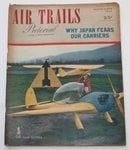Hoggardhigh
Airman 1st Class
Hello and happy New Year!
Most sources suggest that all F4U-1D Corsairs could carry drop tanks on both of their inner-wing pylons.
However, a forum I read today claims that the first 300 F4U-1D's could only carry a drop tank on one inner pylon, but not both of them.
Anyone know if this is true or not?
Thanks☺
Most sources suggest that all F4U-1D Corsairs could carry drop tanks on both of their inner-wing pylons.
However, a forum I read today claims that the first 300 F4U-1D's could only carry a drop tank on one inner pylon, but not both of them.
Anyone know if this is true or not?
Thanks☺

